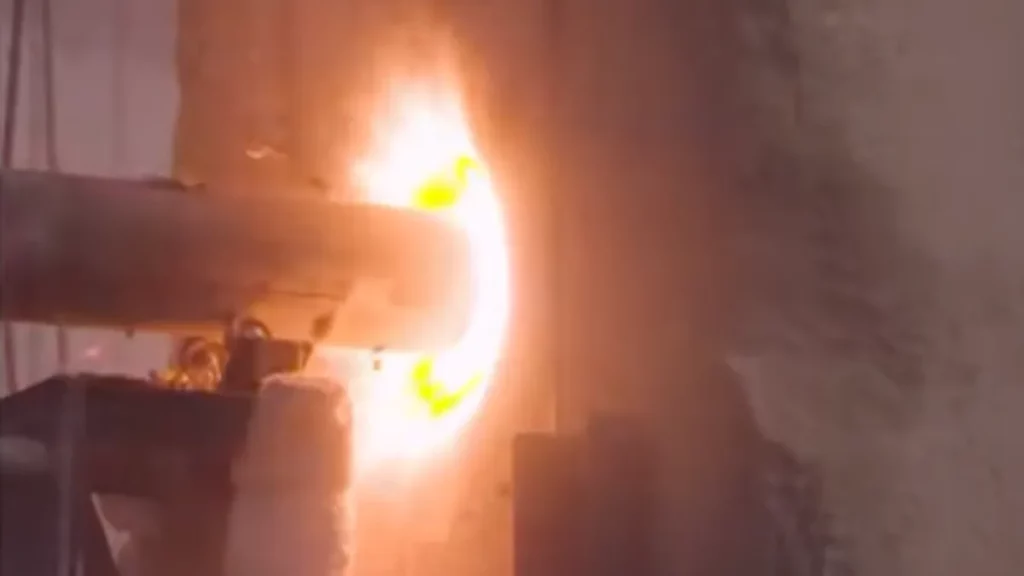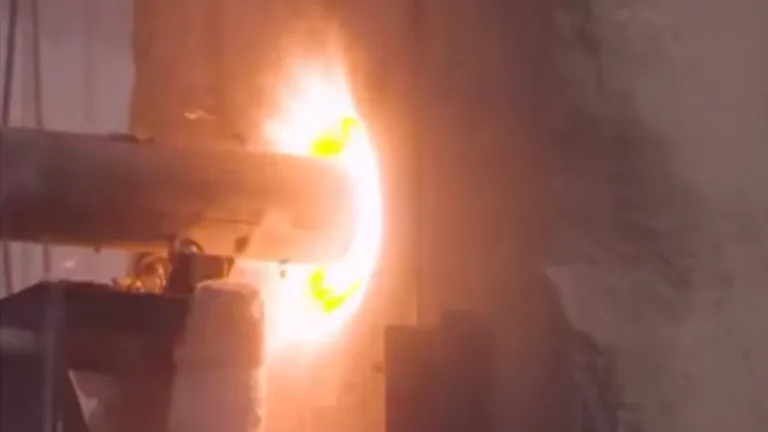A brand-new plasma boring robot can dig tunnels 98% less expensively and 100 times quicker.
Earthgrid plans to re-wire grids across the U.S. at record speed and at a fraction of the cost.
San Francisco-based startup Earthgrid is developing a plasma boring robot that is capable of digging tunnels 100 times faster, and up to 98 percent cheaper than existing boring systems, a report from New Atlas reveals.

The company plans to use its technology to re-wire energy, internet, and utility grids in the U.S.
Meet Earthgrid’s Rapid Burrowing Robot
Unlike conventional boring machines, which typically use massive cutting wheels to slowly excavate tunnels, Earthgrid’s robot blasts rocks with high temperatures to break and even vaporize them via a process called spallation.
The machine can run on electricity, meaning it can also be emissions-free, depending on how energy is sourced. Earthgrid also claims that its system, which doesn’t need to come into contact with the rocks directly as it excavates, is so fast and cheap it will open up a whole host of possibilities. In other words, projects that were once deemed economically unfeasible will now be possible.
Earthgrid is currently operating on pre-seed funding, and it is developing its “Rapid Burrowing Robot (RBR)”, a spallation boring robot with several 48,600 °F (27,000 °C) plasma torches mounted on large discs.
When operational, the RBR will fire up those torches and rotate the discs to blast the rocky surface in its way. The torches on the discs are arranged in a Fibonacci spiral, meaning they widen out away from the center for full coverage. Debris is collected in small pushcarts.
Earthgrid aims to be boring tunnels later this year for customers
Earthgrid has submitted a patent for its machine, which provided estimates for the energy required to power those torches. A version of the RBR using 72 plasma torches to drill a 1-meter (3.3-ft) bore, for example, would require roughly 40 megawatts of electricity on the low-power setting. If operators need to go faster, they would have to use the high-power setting and would need to draw a constant 120 MW. All of that for a relatively small hole a person could barely fit into. For large tunnels, Earthgrid explains, large rigs would have to be attached to the back of the BRB, reaching power draws of approximately 1.38 gigawatts.
Using a high-speed configuration, Earthgrid says it can tunnel up to 1 kilometer (0.62 miles) per day, which is approximately 100 times faster than existing systems. As a point of reference, Elon Musk’s Boring Company does roughly 0.24 km (0.15 miles) daily with its porpoising Prufrock mechanical tunneling machine. However, the Boring Company has stated it aims to eventually bore approximately 1.13 km (0.7 miles) per day with Prufrock.
Then there’s the cost. “We are so much less expensive,” Earthgrid’s website reads, “due to far lower operating costs (no need to change out drill bits & cutter heads multiple times daily, much lower energy consumption, robotics = far fewer workers, no drilling mud and/or drilling chemicals to dispose of, easier spoils removal, sale of our spoils for road & concrete manufacturing, etc.)” According to the company, a low-cost configuration of BRB could cost roughly $300 per 3.3 ft (1 meter) of tunnel. However, given the wildly changing energy demands depending on configuration, it’s likely that costs will also shift significantly depending on the project.
Earthgrid is now moving toward a seed funding round. It faces competition from another company, Petra, which is also developing a plasma boring robot. In a LinkedIn post, Earthgrid’s CEO, Troy Helming, said the company hopes to “be boring tunnels later this year for customer revenue.”
This article was originally published by interestingengineering. Read the original article.
Do not forget to share your opinion with us to provide you with the best posts !




0 Comments